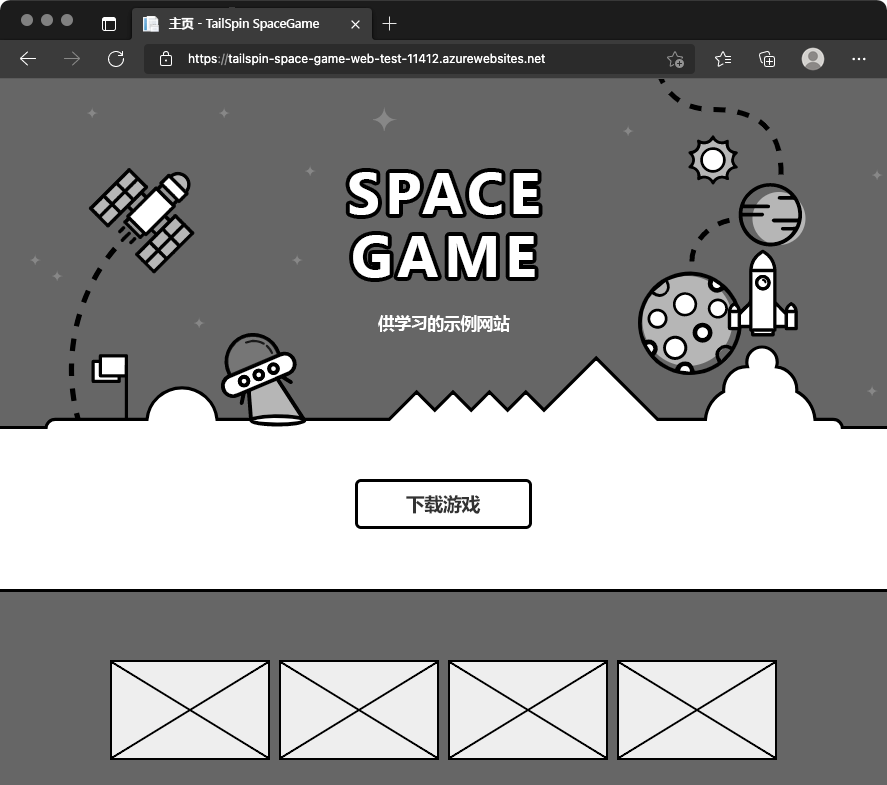练习 - 提升到测试阶段
你的发布管道仍有两个阶段,但它们现在与之前不同。 这两个阶段为“生成”和“开发”。 你推送到 GitHub 的每个更改都会触发“生成”阶段的运行。 仅当“发布”分支中进行更改时,“开发”阶段才运行。 在这里,你要将“测试”阶段添加到管道。
回想一下,团队决定在每天凌晨 3 点使用计划触发器将生成从“开发”阶段提升到“测试”阶段。 设置计划的触发器:
- 在生成配置中定义计划。
- 定义“测试”阶段,其中包含仅在生成原因标记为
Schedule时才运行该阶段的条件。
为便于学习,你可以在这里定义计划,但允许生成直接从“开发”提升到“测试”。 此设置无需等待计划被触发。 完成此模块后,尝试使用不同的 cron 表达式进行试验,以便仅在计划的时间运行“测试”阶段。
将更改提升到开发阶段
在这里,你将修改管道配置,以将生成部署到“测试”阶段。
在 Visual Studio Code 中,按如下所示修改 azure-pipelines.yml:
trigger: - '*' variables: buildConfiguration: 'Release' releaseBranchName: 'release' schedules: - cron: '0 3 * * *' displayName: 'Deploy every day at 3 A.M.' branches: include: - release always: false stages: - stage: 'Build' displayName: 'Build the web application' jobs: - job: 'Build' displayName: 'Build job' pool: vmImage: 'ubuntu-20.04' demands: - npm variables: wwwrootDir: 'Tailspin.SpaceGame.Web/wwwroot' dotnetSdkVersion: '6.x' steps: - task: UseDotNet@2 displayName: 'Use .NET SDK $(dotnetSdkVersion)' inputs: version: '$(dotnetSdkVersion)' - task: Npm@1 displayName: 'Run npm install' inputs: verbose: false - script: './node_modules/.bin/node-sass $(wwwrootDir) --output $(wwwrootDir)' displayName: 'Compile Sass assets' - task: gulp@1 displayName: 'Run gulp tasks' - script: 'echo "$(Build.DefinitionName), $(Build.BuildId), $(Build.BuildNumber)" > buildinfo.txt' displayName: 'Write build info' workingDirectory: $(wwwrootDir) - task: DotNetCoreCLI@2 displayName: 'Restore project dependencies' inputs: command: 'restore' projects: '**/*.csproj' - task: DotNetCoreCLI@2 displayName: 'Build the project - $(buildConfiguration)' inputs: command: 'build' arguments: '--no-restore --configuration $(buildConfiguration)' projects: '**/*.csproj' - task: DotNetCoreCLI@2 displayName: 'Publish the project - $(buildConfiguration)' inputs: command: 'publish' projects: '**/*.csproj' publishWebProjects: false arguments: '--no-build --configuration $(buildConfiguration) --output $(Build.ArtifactStagingDirectory)/$(buildConfiguration)' zipAfterPublish: true - publish: '$(Build.ArtifactStagingDirectory)' artifact: drop - stage: 'Dev' displayName: 'Deploy to the dev environment' dependsOn: Build condition: | and ( succeeded(), eq(variables['Build.SourceBranchName'], variables['releaseBranchName']) ) jobs: - deployment: Deploy pool: vmImage: 'ubuntu-20.04' environment: dev variables: - group: Release strategy: runOnce: deploy: steps: - download: current artifact: drop - task: AzureWebApp@1 displayName: 'Azure App Service Deploy: website' inputs: azureSubscription: 'Resource Manager - Tailspin - Space Game' appName: '$(WebAppNameDev)' package: '$(Pipeline.Workspace)/drop/$(buildConfiguration)/*.zip' - stage: 'Test' displayName: 'Deploy to the test environment' dependsOn: Dev #condition: eq(variables['Build.Reason'], 'Schedule') jobs: - deployment: Deploy pool: vmImage: 'ubuntu-20.04' environment: test variables: - group: 'Release' strategy: runOnce: deploy: steps: - download: current artifact: drop - task: AzureWebApp@1 displayName: 'Azure App Service Deploy: website' inputs: azureSubscription: 'Resource Manager - Tailspin - Space Game' appName: '$(WebAppNameTest)' package: '$(Pipeline.Workspace)/drop/$(buildConfiguration)/*.zip'schedules部分定义一个 cron 表达式。 你可以在配置中定义多个表达式。 此表达式将触发管道在每天凌晨 3 点针对发布分支运行。 将always标志设置为false,以便仅当发布分支包含先前运行的更改时才运行管道。Test阶段定义仅当生成原因为Schedule时才运行该阶段的条件。 (内置变量Build.Reason定义生成原因。)如果此条件为 false,则会跳过该阶段,但前面的阶段会继续运行。备注
显示此条件供学习之用。 建议启用将更改从“开发”提升到“测试”而无需等待触发计划。
在集成终端中,将 azure-pipelines.yml 添加到索引中。 然后提交更改,并将其推送到 GitHub。
提示
在运行这些 Git 命令之前,请保存 azure-pipelines.yml。
git add azure-pipelines.yml git commit -m "Deploy to the Test stage" git push origin release在 Azure Pipelines 中,转到生成。 在生成运行时对其进行跟踪。
生成完成后,若要返回到摘要页,请选择返回按钮。

你会看到部署已成功完成。
在 Web 浏览器中,访问与“测试”环境的应用服务实例关联的 URL。
如果浏览器选项卡仍处于打开状态,请刷新页面。 如果你忘记了 URL,可在 Azure 门户中的应用“服务详细信息”页上找到它。
你会看到 Space Game 网站部署到应用服务,并且正在运行。

(可选)在 Azure Pipelines 中选择“环境”。 然后选择“测试”环境。
Azure Pipelines 记录部署历史记录。 在历史记录中,可以将环境中的更改追溯到代码提交和工作项。

Andy 和 Mara 将“测试”阶段添加到管道。 他们将结果展示给 Amita。
Amita:我喜欢更改的生成和部署,这样我就可以每天早上对它们进行测试。 但我不知道如何在更改到达“过渡”时对其进行控制。
Mara:是的,通过自动化进行部署可以节省大量时间。 请记住,我们仅包含计划的触发器。 在为 Tim 设置“过渡”环境时,让我们为你添加发布审批。 这样一来,只有在你准备就绪后,更改才会移到“过渡”环境。